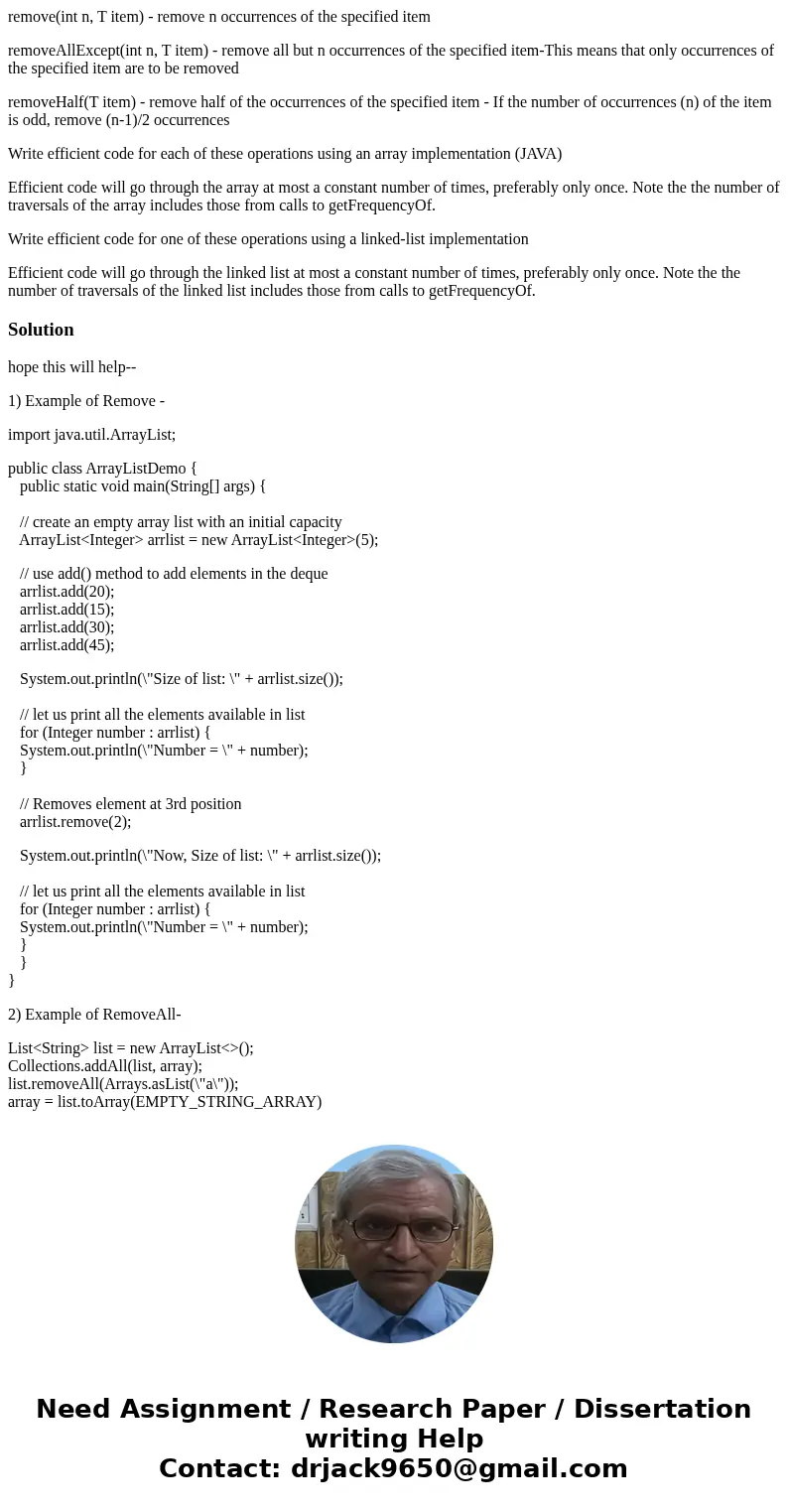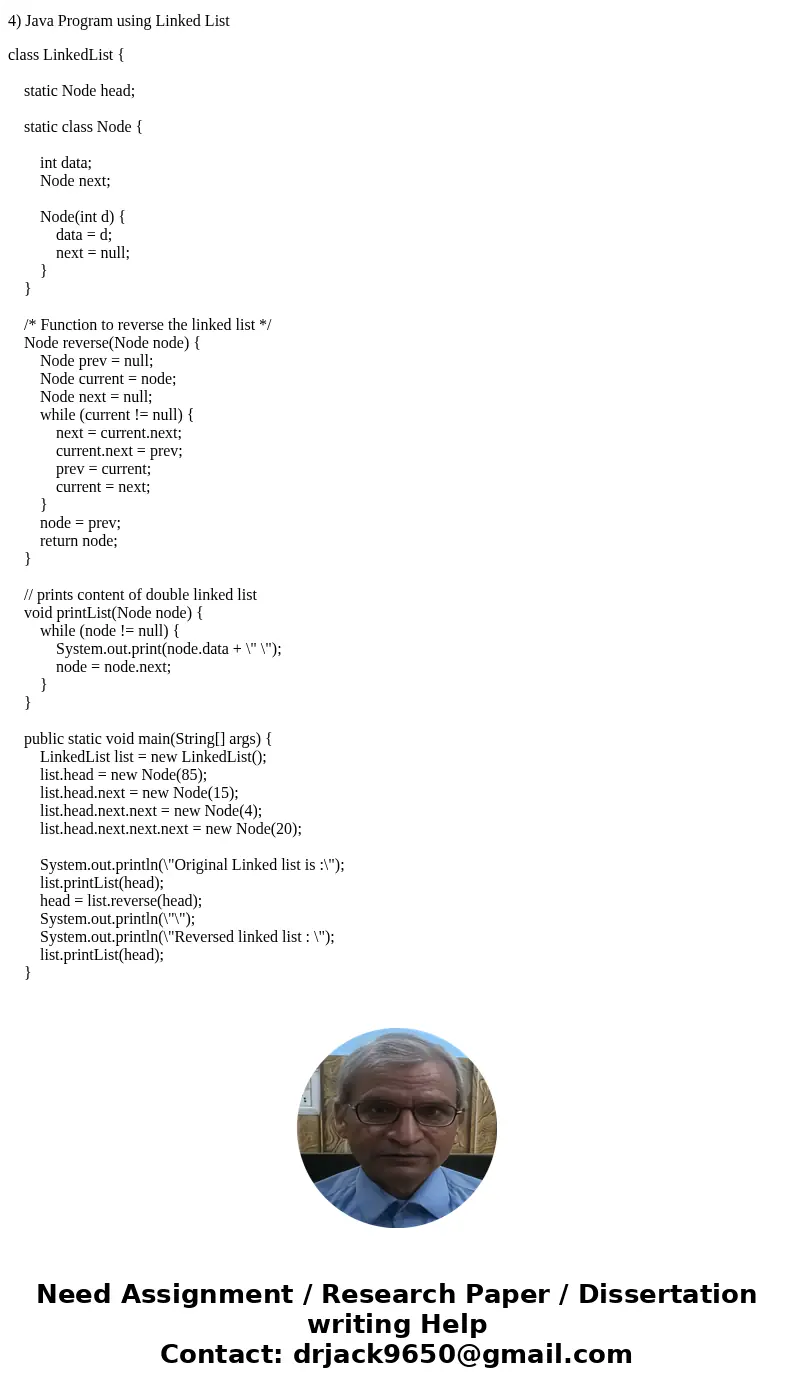removeint n T item remove n occurrences of the specified it
remove(int n, T item) - remove n occurrences of the specified item
removeAllExcept(int n, T item) - remove all but n occurrences of the specified item-This means that only occurrences of the specified item are to be removed
removeHalf(T item) - remove half of the occurrences of the specified item - If the number of occurrences (n) of the item is odd, remove (n-1)/2 occurrences
Write efficient code for each of these operations using an array implementation (JAVA)
Efficient code will go through the array at most a constant number of times, preferably only once. Note the the number of traversals of the array includes those from calls to getFrequencyOf.
Write efficient code for one of these operations using a linked-list implementation
Efficient code will go through the linked list at most a constant number of times, preferably only once. Note the the number of traversals of the linked list includes those from calls to getFrequencyOf.
Solution
hope this will help--
1) Example of Remove -
import java.util.ArrayList;
public class ArrayListDemo {
public static void main(String[] args) {
// create an empty array list with an initial capacity
ArrayList<Integer> arrlist = new ArrayList<Integer>(5);
// use add() method to add elements in the deque
arrlist.add(20);
arrlist.add(15);
arrlist.add(30);
arrlist.add(45);
System.out.println(\"Size of list: \" + arrlist.size());
// let us print all the elements available in list
for (Integer number : arrlist) {
System.out.println(\"Number = \" + number);
}
// Removes element at 3rd position
arrlist.remove(2);
System.out.println(\"Now, Size of list: \" + arrlist.size());
// let us print all the elements available in list
for (Integer number : arrlist) {
System.out.println(\"Number = \" + number);
}
}
}
2) Example of RemoveAll-
List<String> list = new ArrayList<>();
Collections.addAll(list, array);
list.removeAll(Arrays.asList(\"a\"));
array = list.toArray(EMPTY_STRING_ARRAY)
4) Java Program using Linked List
class LinkedList {
static Node head;
static class Node {
int data;
Node next;
Node(int d) {
data = d;
next = null;
}
}
/* Function to reverse the linked list */
Node reverse(Node node) {
Node prev = null;
Node current = node;
Node next = null;
while (current != null) {
next = current.next;
current.next = prev;
prev = current;
current = next;
}
node = prev;
return node;
}
// prints content of double linked list
void printList(Node node) {
while (node != null) {
System.out.print(node.data + \" \");
node = node.next;
}
}
public static void main(String[] args) {
LinkedList list = new LinkedList();
list.head = new Node(85);
list.head.next = new Node(15);
list.head.next.next = new Node(4);
list.head.next.next.next = new Node(20);
System.out.println(\"Original Linked list is :\");
list.printList(head);
head = list.reverse(head);
System.out.println(\"\");
System.out.println(\"Reversed linked list : \");
list.printList(head);
}


 Homework Sourse
Homework Sourse